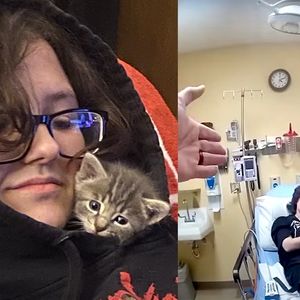
Treatment GuideJust DiagnosedSex & DatingAfrican AmericanStigmaAsk the HIV DocPrEP En EspañolNewsVoicesPrint IssueVideoOut 100
CONTACTCAREER OPPORTUNITIESADVERTISE WITH USPRIVACY POLICYPRIVACY PREFERENCESTERMS OF USELEGAL NOTICE
© 2024 Pride Publishing Inc.
All Rights reserved
All Rights reserved
By continuing to use our site, you agree to our Private Policy and Terms of Use.
The panic of the 1980s was back in full force earlier this year, if only for a few weeks. The insidiousness of HIV was a hot topic, with journalists pouncing on the account of a 40-something gay New Yorker who, having engaged in repeated unprotected sex while using crystal meth, was infected with a case of HIV that is both resistant to almost all antiretrovirals and progresses rapidly to AIDS. Researchers studying the case at the Aaron Diamond AIDS Research Center may never uncover the reasons for this man's particularly invasive HIV strain. But what the news reports largely ignored is that we have an increasing body of knowledge about the factors that cause drug resistance and, more important, how to prevent it from developing. Drug resistance among U.S. and European HIV-positive populations is steadily increasing, posing a serious threat to the health and well-being of all HIVers. Douglas D. Richman, MD, a professor of medicine at the University of California, San Diego, found that among participants in a study whose viral load was above 1,000, 48% had resistance to two drug classes and 13% were resistant to three classes. (There are currently four classes of approved drugs: protease inhibitors, nucleoside analogs, nonnucleoside analogs, and fusion inhibitors.) Even more worrisome is that HIVers are passing along resistant strains to others. AIDS Project Los Angeles reports that 8% to 20% of new infections in the United States and Europe are resistant to one drug class and 1% to 4% are multidrug-resistant. A constantly mutating viral population casts increasing doubt on the idea that HIV is a manageable chronic condition, like diabetes. HIV has the potential to be much more antagonistic, making obsolete the arsenals available to fight it, much to the dismay and panic of affected patients. Michael Shernoff is an HIV-positive New York City psychotherapist who has been on antiretrovirals since the introduction of AZT, and like most HIVers who survived the days of monotherapy, he is now multidrug-resistant. 'I have had patients and friends become really sad, really depressed, and sometimes furious when they are being left out of the so-called protease miracle,' Shernoff says. Annette Lizzul, a 43-year-old who has been HIV-positive nearly half her life, follows an intense drug regimen that offers dwindling hope. In 2000 the Toms River, N.J., resident was near death from reactions to drug meds: She was multidrug-resistant, her CD4-cell count was undetectable, and she had a viral load approaching 12 million. Today, she's on five antiretrovirals in a treatment strategy known as mega highly active antiretroviral therapy. A patient prescribed such a strategy is generally resistant to most or all of the five to nine meds involved, but the hope is that no part of one's viral population is wholly resistant to every drug. Lizzul tells her tale matter-of-factly and without self-pity. But while she currently has an undetectable viral load, she knows it probably will not last and that there are not many drugs on the market today that can still help her. 'I think I have come to terms that I am not going to make it,' she acknowledges. How Resistance Happens HIV is actually extremely sloppy at reproducing itself, lacking the ability to proofread errors when it replicates its DNA. Consequently, only 0.01% to 0.1% of its viral copies survive to infect new cells. The rest are so mutated that they die before harming the host's immune system. However, chance dictates that eventually a mutated copy of the virus will infect other cells--and do so more effectively than nonmutated virus. One of the ways HIV can more efficiently infect CD4 cells is if it can evade the effects of antiretroviral drugs. The best environment for such a mutation to occur is one in which there is both an elevated viral load and a high concentration of anti-HIV drugs. The virus is thus replicating more readily, increasing the likelihood that mutations will produce a viral copy resistant to one of the drugs present. Then the copy of the virus with the ability to dodge the antiviral bullet makes many more copies of itself and becomes the dominant strain of virus in the body, making the particular drug it is resistant to ineffectual in its control of the viral population. And since antiretrovirals within the same drug class operate in similar ways, cross-resistance to some or all of an entire class of drugs is possible if a person becomes resistant to even a single medication. How to Fight It Full viral suppression is a vital goal in the fight against drug resistance. HIVers who wait too long to start their initial therapy will likely have a harder time decreasing viral loads and are at greater risk for resistance. Viral loads also often rise above undetectable levels when patients are not diligent about their drug regimens--taking meds on time and as prescribed, with a goal of 100% adherence. Numerous studies have found that anything below 95% adherence sets a likely stage for resistance: viral resurgence with relatively high drug levels. According to David Bangsberg, MD, who researches HIV drug resistance at the University of California, San Francisco, most people on combination therapy in the United States adhere at rates around 70%. At a mean so far below the target, he says, it's no wonder resistance is such a burgeoning problem. It is easy to blame the victim in this case, but there are other factors at play. According to a study published in the journal AIDS by Peter J. Piliero, MD, an HIV researcher at Albany Medical College in New York, the more doses per day a drug requires, the lower the patients' average adherence. In addition, psychological issues such as untreated depression, stress, and drug or alcohol abuse, as well as aversion to side effects of various medications, all chip away at the 100% goal. Numerous HIV researchers put much of the responsibility on the doctor, not the patient, to make sure patients are given the simplest, easiest-to-tolerate regimen possible--with the fewest pills, daily doses, and side effects. Considering the 20-plus antiretrovirals that exist today, there are more ways to achieve this goal than ever before. Thus, treatment advocates tell patients not to be afraid to tell their doctors if something about their regimen is bothering them. In the long run that could literally be a life-or-death conversation. 'People, even in this day and age,' Shernoff says, 'need help in learning to partner with their physician. So if somebody is athletic and on a drug combination that gives him diarrhea, sometimes he will be ashamed to ask' for a change in his medications. And physicians are certainly capable of making questionable medical decisions when treating multidrug-resistant patients. Sequential monotherapy is an instance or pattern in which only one new drug is added to a regimen of failing drugs. Since medications still have a beneficial effect even when a patient has developed some resistance, a physician will keep most of the regimen going in order to suppress the virus to the degree possible. The term recalls monotherapy, or single-drug therapy, the only option available when AZT was introduced. Because single drugs do not generally fully suppress the virus, the result was widespread drug resistance that continues to plague survivors like Shernoff and Lizzul today. Likewise, adding a single effective drug to a failing regimen is a huge gamble: buying time on one end while increasing the likelihood of developing resistance to the new drug in the long run. A multidrug-resistant patient is unlikely to have full viral suppression without at least a triple cocktail of powerful new meds. Lizzul blames her desperate situation in part on her own poor decisions in treating her disease during the 1990s. With so few treatment options, she went on numerous drug trials in which she added one new drug at a time to her failing regimens, resulting in her current multidrug-resistant state. If she had held out for multiple new drugs to become available instead of adding and becoming resistant to each one in turn, she might have been able to establish a cocktail that would fully suppress her virus and sustain her health for some time. The catch-22 is that she might not have lived long enough for the other drugs to become available. HIVers who have developed resistance can unfortunately pass along their resistant strain of the virus to others. Once the newly infected person goes on combination therapy, the virus can add further levels of resistance. That said, it is a logical turn of events that we begin to see cases like the New York City man, in which HIVers who have never taken a single antiretroviral are already resistant to almost all available drugs. A controversial topic of debate is whether reinfection, also known as superinfection, plays a significant part in the development of drug-resistant viral strains. While research has shown that those with established HIV infection are only rarely reinfected with a new viral strain--which can increase an individual's resistance to anti-HIV meds--it is not uncommon for those with new infections to get reinfected. Davey Smith, MD, who studies reinfection at the University of California, San Diego, has found that 5% of people who are infected for less than a year will be reinfected during that time. Then again, some cases of resistance are a simple result of bad luck. Jim Pickett, 39, the director of public policy at the AIDS Foundation of Chicago, says he is 'the type of person who wanted to get straight A's in school, so I have been an adherent patient.' But recent tests showed he had become resistant to all of his meds. He is taking a gamble and going on a structured treatment interruption, after which he hopes to begin an entirely new drug regimen'replete with potential side effects he is not willing to face just yet. Not All Gloom and Doom If Pickett had decided to remain on his medications, there is still reason to believe he would benefit from a regimen that is technically failing. Because virus that mutates into a resistant form sacrifices some of its strength, it is less fit than nonmutated virus. Genetic resistance tests can measure what is known as replication capacity to see if a patient has a particularly unfit virus. If it is unfit, a patient may be advised to stay on a failing regimen to suppress wild-type virus; meanwhile, the resistant virus will in theory be slow to cause harm, because it replicates sluggishly. In the near future improved drug-resistance testing will allow doctors to make better sense of changes in a patient's viral population and decide how best to tailor drug treatment accordingly. Chris Petropoulos, chief scientific officer at ViroLogic, the go-to lab for genetic tests, says the company should soon be able to analyze HIV populations within individual patients and predict with relative accuracy how well each of the 20 available antiretrovirals will work to suppress a patient's virus. Research also brings hope to those whose viral loads remain stubbornly detectable but under 20,000 copies. A study published in the Journal of Acquired Immune Deficiency Syndromes in September 2004 found that over a four-year period an HIVer with a viral load between 400 and 20,000 had no greater chance of getting sick or dying than one with an undetectable level. According to the study, people with viral loads above 20,000 bear the greatest risk for complications from AIDS. Other research has found that one's CD4-cell count is more important as a marker of health prospects than viral load. It makes sense: If CD4 cells are healthy, the virus is not doing effective damage, no matter how prevalent it is in the blood. Canadian researchers recently found that a CD4-count increase of as little as 25 significantly improved the health of study subjects whose viral loads were above undetectable. Most important, resistant HIVers have reason for optimism considering the huge advancements in drug treatment that are just around the corner [see 'Drugs in Development' on pages 29 and 30]. A New Hope Nelson Vergel, a 46-year-old Houston resident and longtime AIDS activist, is resistant to all available medications. His viral load is 25,000, and his CD4 count is 220. But he sees a silver lining, he says. Speaking for multidrug-resistant HIVers, always on the edge of their seat as they await new drug treatments, he says, 'I think we are going to go through a rough one or two years. But most of us are going to be alive by the year 2007. There is going to be another wave of new anti-HIV drugs, like the one that we had with protease inhibitors. So I am pretty hopeful that 2007 and 2008 are going to be other miracle years.' Vergel is referring to the imminent release of antiretrovirals that promise better resistance profiles than drugs currently available. He and members of the AIDS Treatment Activists Coalition are doing their best to pressure companies to allow multidrug-resistant patients access to combinations of these drugs before they hit the market [see 'Survivor' on page 21]. He is also looking forward to a rarefied group of drugs poised to join Fuzeon in the class called entry inhibitors, which work by blocking HIV's entry into CD4 cells. Even more exciting are drugs currently in development that attack the virus in entirely new ways. When HIV locates a CD4 cell it undergoes a three-part process to facilitate entry. First, a protein in the virus called gp120 binds to the surface of the cell. Second, the virus attaches to one of two coreceptors on the cell: called CCR5 and CXCR4--R5 and X4, for short. Last, another viral protein called gp41 helps the virus fuse to the cell and invade it. Fuzeon, a fusion inhibitor, which is a subset of the entry inhibitor class, acts on the last step. Several new drugs in clinical trials are aimed at attacking the other two steps. They may start hitting the market in two to three years. Scientists are hoping that these drugs not only will provide relief for the multidrug-resistant patient but can be used as an entirely new form of triple-threat combination therapy: one that operates entirely on the outside of CD4 cells. Researchers hope for fewer side effects with such drugs, since it is believed that bodily changes like lipodystrophy and neuropathy result from damage done by antiretrovirals to CD4s' mitochondria--a crucial element of any living cell. Yet another new class of drugs on the horizon is maturation inhibitors. The pharmaceutical company Vitex is developing the first of these drugs, PA-457. Currently in phase II clinical trials, the drug operates on the last phase of the viral life cycle. As the virus exits the CD4 cell, the drug blocks the release of a certain protein so that the virus is unable to mature or reproduce. Vitex hopes to develop an entire franchise of maturation inhibitors to act on different proteins in this phase of production. In a new approach to attacking HIV, Koronis Pharmaceuticals is developing a drug the company hopes will be available by 2009 that will manipulate the DNA of HIV such that it makes so many mistakes upon replication that it is unable to make viable copies of itself. Looking Ahead
Want more breaking equality news & trending entertainment stories?
Check out our NEW 24/7 streaming service: the Advocate Channel!
Download the Advocate Channel App for your mobile phone and your favorite streaming device!
From our Sponsors
Most Popular
Diets that mimic fasting reverse aging: study
March 07 2024 5:28 PM
The Most Amazing HIV Allies & Advocates of 2023
November 03 2023 12:51 PM
Before AIDS, gay artist Rex drew hot men on the prowl — then he disappeared
April 11 2024 3:15 PM
PrEP without a prescription now a reality in California
February 06 2024 8:37 PM
This OnlyFans Star Is Trying to Raise $100K to Fight HIV
December 26 2023 3:05 PM
Injectable HIV treatment, prevention: Everything you need to know
March 26 2024 3:28 PM
The naked Black body takes center stage in this HIV campaign
January 03 2024 1:07 PM
8 dating tips for gay men from a gay therapist
March 21 2024 2:50 PM
Mr. Gay World wants to make sure you're OK
January 02 2024 4:56 PM
Plus: Featured Video
Latest Stories
Discover endless fun at The Pride Store: Games & electronics for all ages
April 09 2024 4:25 PM
Mean Girls' Daniel Franzese on playing an HIV+ character
April 09 2024 3:57 PM
HIV-positive Air Force, Navy servicemembers victorious in lawsuit
April 09 2024 3:02 PM
Unlocking a new level of beauty with Dr Botanicals' ethical skincare line
April 08 2024 3:40 PM
Unleash your wild side with The Pride Store’s beginner’s guide to kink
April 08 2024 3:35 PM
Why are mpox cases in the U.S. on the rise again?
April 08 2024 1:30 PM
Happy national foreskin day!
April 04 2024 1:45 PM
Adult entertainment icons Derek Kage & Cody Silver lead fight for free speech
April 03 2024 3:06 PM
LGBTQ+ patients twice as likely to face discrimination: survey
April 02 2024 4:57 PM
Spring into The Pride Store’s top new arrivals for April
April 02 2024 4:39 PM
Nashville PD Must Pay HIV-Positive Man Denied a Job
April 01 2024 6:22 PM
Common has a message on how to foster self-love
March 29 2024 7:33 PM
Listen to Dr. Levine: Take syphilis seriously
March 28 2024 6:40 PM
Breaking boundaries in gender-free fashion with Stuzo Clothing
March 27 2024 2:15 PM
Find your perfect fit with gender-inclusive fashion from The Pride Store
March 26 2024 2:16 PM
Sexual assault survivor Stephen Hart uses theater to heal
March 25 2024 5:52 PM
Prohibition Wellness & revolutionizing self-care for all
March 22 2024 1:19 PM
Unleash your fiery spirit with The Pride Store’s Aries gift guide
March 21 2024 2:08 PM
















































































